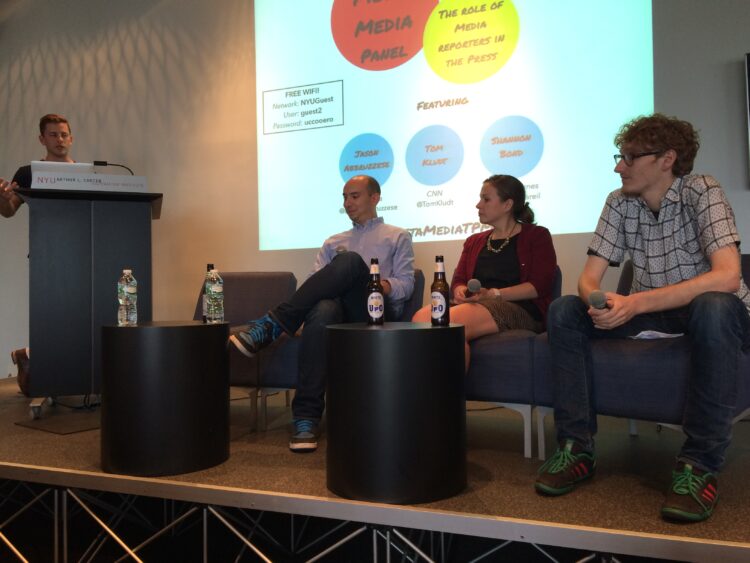News trending on Twitter. Facebook Instant Articles. Snapchat’s Discover. Technology has taken news and the media to a different level for readers and consumers today. No longer do audiences have to wait for the radio, cable TV or the daily newspaper to break a story. Just Twitter alone has sped up the news cycle dramatically, and now other social media sites are running to keep up.
Not only does technology’s influence on news affect readers, but it also affects journalists as well. In a recent panel discussion moderated by J.J. Colao, three media and tech writers spoke about the influence of tech on media, and how the two industries often intertwine. Panelists included Shannon Bond of The Financial Times; Jason Abbruzzese of Mashable; and Tom Kludt of CNN.
All panelists agreed that in fact, there’s a media component to almost every story. Breaking news will often be supplemented with a politician’s scandalous tweet or a network’s decision to censor certain words in an interview. Beyond these threads that run through most articles, Abbruzzese also said that articles about media itself—such as those tracking new releases on Netflix or updates to the Facebook interface—are especially popular among today’s young audiences.
Additionally, Kludt stressed the changing media environment for journalists today, noting that it’s almost “unfathomable” for journalists to not be on Twitter. He also speculated as to what his entry into journalism may have been like before the Internet, and guessed that it probably would have been much more difficult to break into the industry.
For Kludt, the intersection between tech and media has definitely changed the industry for the better: it has opened up the field to younger writers, a higher volume of journalists and a more diverse range of topics. And then, of course, all those articles are more accessible to readers who only have to open their social media profiles to access the latest news.
News and media is even making its way into the startup world. Many young journalists are targeting millennials with highly targeted news outlets and are receiving substantial funding and attention from venture capitalists. With so many tailored news outlets available, is there a concern that larger companies will lose some of their audiences?
According to the panelists, this isn’t a real concern. Kludt speculated that in 2-3 years, many of these small publications won’t be around anymore; similarly, Bond said that often times, these startups are swallowed by media giants like Condé Nast which turns VCs away.
On the other hand, there are possible downsides to news going social. Take Facebook Instant Articles, for example. Bond pointed out that certain news outlets that have partnered with Facebook might not have a strong enough brand to maintain control of their own audiences after signing an agreement with the social media giant. While some publications, such as The New York Times, have a solid foundation and loyal readers, other outlets may be sacrificing some of their readership control in the Facebook deal. Bond said that she would be especially wary considering Facebook’s tendency to change its privacy policies frequently.
Looking ahead, there are different ways to approach the intersecting worlds of media and tech. Bond said that on a recent visit to Silicon Valley, the focus is making news as mobilized as possible—to achieve the greatest reader accessibility by using the Internet as a powerful platform. But Bond shared that at The Financial Times, over 200,000 readers still purchase the print publication. This portion of its audience is significant, especially because they pay the most to read the content.
So the decision to follow the social media trend for news seems to depend partially on an organization’s loyalty to the legacy model of a business. For some, such as The Financial Times, this model is important. But for others, the democratization of news over the Internet is the next big move.




